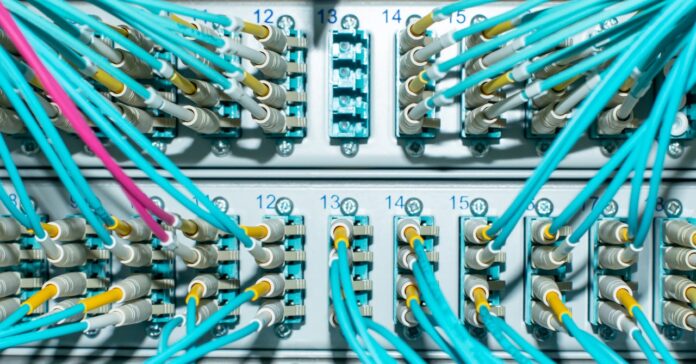President Biden’s plan to connect all Americans with high-speed broadband includes proposals to boost competition, build more publicly owned networks, lower prices, and prioritize “future-proof” networks instead of ones that would quickly become outdated. In other words, the plan includes some of the broadband industry’s least-favorite ideas and is sure to meet fierce resistance from cable and telecom lobby groups and Republicans.
Biden’s $100 billion broadband proposal is part of the American Jobs Plan described by the White House in a fact sheet released Wednesday. The broadband details released so far are a bit vague, and the plan could be changed in Congress, but there’s a lot to like for internet users.
“The president believes we can bring affordable, reliable, high-speed broadband to every American through a historic investment of $100 billion,” the fact sheet said. The $100 billion in broadband funding would be spread out over a number of years, as the entire jobs plan is slated to “invest about $2 trillion this decade.”
Municipally owned networks, nonprofits, and cooperatives would play a major role in the expansion pitched by Biden. The broadband industry and Republicans have been fighting city-owned networks for years, and nearly 20 states have laws that restrict the growth of municipal broadband. While Democrats have proposed eliminating those state laws, congressional Republicans last month proposed a nationwide ban on municipal broadband.
Biden’s plan “prioritizes support for broadband networks owned, operated by, or affiliated with local governments, nonprofits, and cooperatives—providers with less pressure to turn profits and with a commitment to serving entire communities,” the White House fact sheet said.
Biden’s plan also seeks to “promote price transparency and competition among internet providers, including by lifting barriers that prevent municipally owned or affiliated providers and rural electric co-ops from competing on an even playing field with private providers, and requiring internet providers to clearly disclose the prices they charge.” The “lifting barriers” part of that statement could be a reference to overturning state laws that restrict municipal broadband, but the fact sheet didn’t get more specific on that point.
The proposal also “ensures funds are set aside for infrastructure on tribal lands and that tribal nations are consulted in program administration,” the fact sheet said. “Along the way, it will create good-paying jobs with labor protections and the right to organize and bargain collectively.”
Biden’s plan to “requir[e] internet providers to clearly disclose the prices they charge” is another idea hated by major broadband providers, which love to advertise low rates and then hit users with much higher monthly bills through a slew of hidden fees. The Obama-era Title II regulation included rules requiring more price transparency, but they were eliminated when FCC chair Ajit Pai led a vote to deregulate the industry and repeal net neutrality rules.
Biden’s fact sheet did not get specific about the price-disclosure rules he proposes, but he also promised other actions to reduce prices. The fact sheet said:
Biden’s fact sheet didn’t specify any minimum speeds for broadband networks built under the plan. But it said, “The president’s plan prioritizes building ‘future-proof’ broadband infrastructure in unserved and underserved areas so that we finally reach 100 percent high-speed broadband coverage.”
Future-proof could mean fiber broadband with symmetrical upload and download speeds, or at least networks that provide higher upload speeds than today’s cable and fixed-wireless networks. If Biden wants to prioritize symmetrical speeds, he will have support from at least some high-ranking congressional Democrats.
As we recently reported, the congressional Democrats’ plan would include an $80 billion fund to deploy broadband with download and upload speeds of 100 Mbps to unserved areas. These speeds would likely require a massive fiber-to-the-home investment and is opposed by AT&T, which argues that Americans should be happy with 10 Mbps upload speeds.
AT&T admitted that fiber technology is the most “future-proof” while claiming that bringing fiber to every home “is not practical.” But with Democrats controlling Congress and Biden agreeing that “future-proof” networks are the ones to prioritize in funding, the US could end up with a universal-broadband plan that heavily emphasizes fiber to the home.
Biden’s fact sheet argues that the investment in broadband needed by America today is similar to the one that brought electricity nationwide nearly a century ago. The fact sheet said:
The Biden fact sheet also said that America needs to fix the digital divide that has left many disadvantaged groups with less access to and ability to afford internet service:
This story originally appeared on Ars Technica.
- 📩 The latest on tech, science, and more: Get our newsletters!
- Audio pros “upmix” vintage tracks and give them new life
- Why you stay up late, even when you know you shouldn’t
- How sea chanteys made me love video games again
- Apple bent the rules for Russia. Other countries will take note
- Want carbon-neutral cows? Algae isn’t the answer
- 👁️ Explore AI like never before with our new database
- 🎮 WIRED Games: Get the latest tips, reviews, and more
- ✨ Optimize your home life with our Gear team’s best picks, from robot vacuums to affordable mattresses to smart speakers







